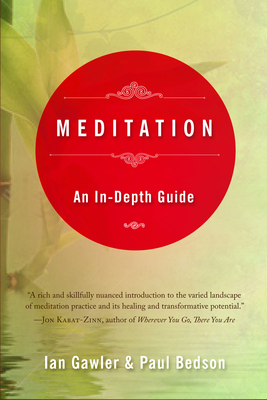
Meditation:
An In-Depth Guide
By
Ian Gawler & Paul Bedson
Meditation is increasingly recommended for relaxation,
for enhancing relationships and well-being, to increase performance in sports
and business, for personal growth, and to assist healing. Introducing
mindfulness-based stillness meditation, Ian Gawler and Paul Bedson explain how
to build a daily meditation practice. The authors also show how meditation can
be used to work with our emotions, aid healing, manage pain, or as a spiritual
practice.
Meditation is a path we can pursue and refine
throughout our lives. Drawing on modern science as well as ancient Eastern
traditions and the authors own extensive personal experience as practitioners and teachers, this guide offers
the techniques and understanding needed to explore meditation practice deeply.
It is also an invaluable resource for meditation teachers from all background.
From Kirkus Review:
In a world of overextended schedules and stress-induced headaches, Gawler (You Can Conquer Cancer, 2007, etc.) and Bedson (The Complete Family Guide to Natural Healing, 2005) offer techniques for achieving peace.
There are many user-friendly books that teach basic meditation, but this edition is particularly unique in its authors' life stories and expertise in the mind-body connection. Bedson spent time in India learning from masters at a Tibetan monastery, and Gawler, diagnosed with swiftly fatal osteogenic sarcoma at the age of 24, overcame his painful disease through meditation and lifestyle change and has remained cancer-free since 1978. Realizing that the Western mind tends to have a take-a-pill-and-fix-it-quick attitude, the authors patiently explain the process and present much good advice, such as how to remain realistic (some people have grandiose expectations of what they will experience). Whether using the direct approach, which creates deep relaxation and an open awareness, or the gradual approach preferred by many novices, preparation is the foundation for creating a space conducive to relaxation, thus unleashing the modern mind to become aware of stillness. Nonetheless, the daily grind can often interfere with meditation, and the authors include many practical applications -- e.g., breathing exercises to help prevent some common obstacles to mindfulness, like boredom, restlessness and impatience. There are manifold physical and psychological benefits from meditation -- lower blood pressure, pain management, riddance of bad habits or negative thought patterns, etc. -- and each positive outcome creates a healthy mind-body ripple effect that radiates understanding, compassion and love for others.
Regardless of religious beliefs or life situations, any reader would benefit from the Mindfulness-Based Stillness Meditation (MBSM) techniques clearly outlined here.
On his blog, Ian Gawler writes: